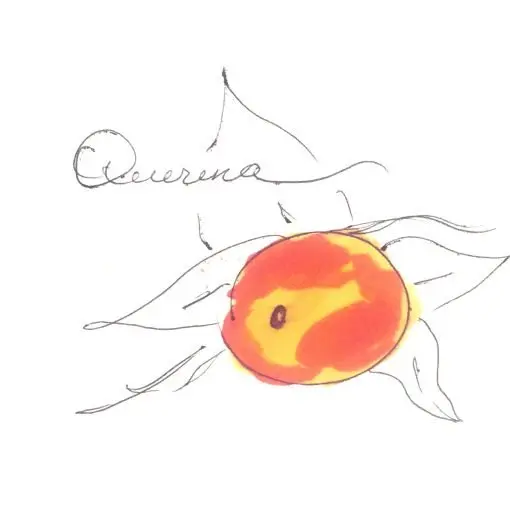I love finding out what my favourite or sometimes not so favourite foods have to share nutritionally wise – we are often told that so many vegetables and fruits are “bad” however, this is not always the case, yes fruits have sugar in them – these are fruit sugars and not the same as processed sugars – we are better reaching for an apple or pear than a chocolate bar or fizzy drink. IF you are in doubt there are many apps that can help with finding out if it is a low or high carb/ calorie content etc. and also FODMAPs are an issue too that can also be worked out from elimination of high fodmap foods.
However, if we can focus on the goodness within these we can still enjoy some fruits such as mango for instance – moderately and still gain the health benefits.
Eating in season means encouraging short distribution channels and local agriculture:
In-season fruit and vegetables require less transport and packaging than out-of-season or imported produce. So they generate fewer greenhouse gas emissions and less waste, which is good for the environment and the climate. By choosing seasonal fruit and vegetables, you’re also promoting short distribution channels and local agriculture, which helps to support producers, preserve jobs and know-how, and boost the economy. Seasonal fruit and vegetables can be found in organic shops, markets, cooperatives, AMAPs (Associations pour le maintien d’une agriculture paysanne) or directly from producers.
Q is For……
In fact I was talking to someone the other day that has been following Alpha-Bites since I started sharing. And the challenge is going to the letter Q, well, yes she’s not wrong to be honest because I am trying to keep to the fruit and vegetables we find here in France (and Europe!) but I am up for the challenge of course….and I hope I have succeeded 🙂
QUINCE
These trees grow all over France, and I have to say I do love Quince Chutney and Quince Jam.
Quince is a fruit that has been around for a long time, in which the fruit is used a lot in folk medicine to treat digestive disorders, allergies and high blood sugar. In addition, modern medicine has also studied some of its effects such as treating ulcers and gastric reflux, pregnancy, and improving the immune system.
Quince (Cydonia oblonga) is an ancient fruit native to different parts of Asia and the Mediterranean. It began to be cultivated in ancient Greece and Rome and is a close relative of familiar fruits such as apples and pears. In ancient Greece and Rome, it served as a symbol of love and fertility.
Quince fruit has an egg shape about 10-15cm long, inside the fruit has a hard core, yellow-brown spongy flesh, and fragrant. However, unlike other fruits, they cannot be eaten raw, only after being cooked or processed into jam.
Quince has been used in folk medicine for decades, but research on this plant is still in its early stages. Currently, quince is mainly used for the treatment of digestive disorders, allergies and high blood sugar
but what are the health benefits to these fruits?
Health Benefits
- Rich in Antioxidants. Quince fruit is a great source of antioxidants, which are powerful compounds that help neutralize disease-causing free radicals and protect against chronic disease. …
- May Help Relieve Constipation. …
- Fights Bacteria. …
- Promotes Heart Health. …
- Supports Wound Healing. …
- Prevents GERD
Rich in nutrients
Quinces contain fibre and several essential vitamins and minerals, making them a nutritious addition to almost any diet.
A single, 3.2-ounce (92-gram) quince provides the following:
- Calories: 52
- Fat: 0 grams
- Protein: 0.3 grams
- Carbs: 14 grams
- Fibre: 1.75 grams
- Vitamin C: 15% of the Daily Value (DV)
- Thiamine (vitamin B1): 1.5% of the DV
- Vitamin B6: 2% of the DV
- Copper: 13% of the DV
- Iron: 3.6% of the DV
- Potassium: 4% of the DV
- Magnesium: 2% of the DV
As you can see, this fruit supplies moderate amounts of vitamin C and copper, plus small amounts of B vitamins, iron, potassium, and magnesium.
While not extraordinarily rich in any specific compound, quinces offer a wide array of nutrients for very few calories.
Many of the benefits associated with quinces can be attributed to the fruit’s rich supply of antioxidants.
Antioxidants reduce metabolic stress, lower inflammation, and protect your cells against damage by free radicals, which are unstable molecules.
Some research suggests that some antioxidants in quinces, including flavonols like quercetin and kaempferol, reduce inflammation and safeguard against chronic illnesses like heart disease.
A recent study found quince syrup to be significantly more effective than vitamin B6 at reducing pregnancy-induced nausea and vomiting. Still, more studies are necessary.
Because of their tough flesh and sour flavor, quinces are best eaten cooked. You can use cooked quince to top oatmeal, yogurt, or roasted meats.
Quinoa

Okay, so this might sound a little bit like cheating because Quinoa is mainly known as a grain; however, bear with me here, because its leaves are also edible, so technically, it can be considered that of vegetable!
The quinoa leaves have a flavour similar to spinach and can be used in salads or cooked as a green vegetable. Their nutritional composition is similar to spinach; though, the protein from quinoa leaves contains more isoleucine and valine and slightly less methionine, cystine, phenylalanine, and tyrosine
The leaves contain many important potential nutrition, content of proteins, carbohydrates, lipids and dietary fiber, minerals such as Fe, Zn, Na, and K, and vitamins (provitamin A, vitamin E). Consumption of nutrient-rich leafy green quinoa may prevent nutritional deficiency caused by Iron and Zinc.
Quinoa greens are gluten-free and provide an excellent source of protein, amino acids, essential minerals, and omega-3 fatty acids.
However, unless you live near a farm that grows Quinoa it’s not readily available but maybe one day Quinoa d’Anjou may start selling them as a bi-product! You never know?
Querina Apple

Also called Florina, the Querina apple is a French domestic cultivar that combines the characteristics of Jonathan, Golden Delicious, and Rome apples. Its skin is a beautiful blend of purple-red and yellow shade.
It was developed in Angers, France, by the “Station de Recherches d’Arboriculture Fruitiere”. Although developed in France its ancestry is entirely American.
Querina’s pulp tastes sweet with a slight hint of tart, and it’s quite juicy. Typically, this flavorful apple feels moderately firm while holding and has a crisp, crunchy texture. However, Querina apples can sometimes be a little tender, which is not to everyone’s liking.
This medium to large-sized apple is often eaten fresh or made into delicious apple ciders.
For all the health benefits of an APPLE the first Alpha-bite fruit shared back in 2019!
What apple leaves good for?
Bone health, vision and skin...
Apple leaves are rich in calcium, one of the main ingredients that helps in the strength of bones and teeth. Foods rich in calcium help you avoid diseases like osteoporosis. Apple leaves contain a lot of vitamin A that improves vision in children, even at night.
Rich in antioxidants
Apple leaves contain an antioxidant called quercetin which according to studies improves, strengthens and protects the immune system, especially in difficult times.
You can also use Apple Leaves to nourish and brighten the skin.
Split a leaf in half and apply its extract on the skin until the leaves dry. Grind apple leaves, mix with milk cream and apply to your face.
Apple leaves can be placed under the eyes against dark circles or puffiness.
You can use two spoons of apple leaves with mashed boiled potatoes and apply to the problem areas under the eyes. Rinse it off after a few minutes with warm water.
If you would like further ideas of what to Eat in May, then there is a great app called Yuka I have recently found it and it’s great to analyse food and make up products!
A rainbow of colours on your plate will ensure you are getting the right nutrients in your diet, if you can’t eat something due to health issues, there are always alternatives, and whether you feel you can’t eat it because it’s not a nice taste, or you have visions of it slopped up on your plate at school meals, then choose other ways of cooking or serving!
Bon Appetite!

disclaimer *I’m not a doctor! – these articles are purely for your own takeaway. There is by no means any intended medical advice given and all articles are read from trusted sources, coursework and books I have read and am reading. If you have any health issues then please seek advice of your doctor before approaching a nutritionist. If you would like to talk about any of the issues or foods on my website for a holistic nutrition approach then please contact me directly.
I cannot offer advice other than what I have gained holistic nutrition / massage diplomas in.



